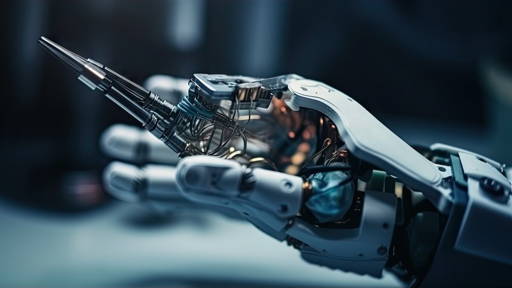For the rehabilitation of patients who have had a stroke, arm robots are increasingly being used for arm function rehabilitation. One of the reasons for the purchase and deployment of such robots is the lack of personnel at hospitals and rehabilitation institutions.
It was, and is, assumed that those arm robots have a positive effect on improving arm function. However, scientific literature research, led by the Amsterdam UMC, shows that arm robots do not help patients improve arm function.
Arm robots have no added value
Patients who have impaired arm function after a stroke, experience problems with daily activities. Think of simple tasks like grasping cutlery or opening a door. It goes without saying that this limitation negatively affects the quality of life.
“In the Netherlands, arm robots are hardly used, but in other countries in Europe and especially countries such as China, Japan, India, South Korea and North America, arm robots are increasingly seen as the solution to the financial and personnel shortages within post-stroke rehabilitation. Our study shows that this solution has no added value in regaining arm and hand skills after stroke,” said Gert Kwakkel, professor of Neurorehabilitation at Amsterdam UMC and leader of the study conducted with colleagues from Switzerland and Italy.
The researchers analyzed data from more than 4,000 patients who rehabilitated with or without the help of arm robots after a stroke. They showed that the use of arm robots during rehabilitation resulted at most in a small (3%) improvement in muscle and arm function. However, no improvement in arm and/or dexterity occurs.
Higher healthcare costs
The study also shows that the use of care robots has the opposite effect on healthcare costs. These are in fact higher in that case compared with regular treatment at a physical or occupational therapist.
“Our findings provide robust evidence. This evidence is independent of the type of robot one has used, the number of weights the robot controls, the cost and additional features - such as displays with virtual games - one has added to the robotic arm. With data from more than 4,000 patients and thousands of treatments, we would have been able to demonstrate the presence of a positive effect of arm robots. That this has not happened suggests that arm robots are more hype than an actual solution,” Kwakkel said.
Arm robots not improved (yet)
The missing added value of using arm robots for the rehabilitation of patients with impaired arm function, despite continued development of arm robots and better technology, has also not improved in recent years. Moreover, they are quite expensive to purchase.
“Robots that can completely take over arm and hand function using an interface controlled directly or indirectly from the brain seem to be more promising when it comes to regaining important functions such as grasping and reaching,” says the researcher. However, this is a development still in its infancy. “For now, future research in the field of rehabilitation robotics will have to focus more on better understanding how stroke patients learn to regain their skill,” Kwakkel concludes.
Robotics in healthcare
Of course, there are also plenty of examples where the use of robots does help advance care. In many OR’s, the operating robot has long since become indispensable. To support surgeons so that surgical procedures can be performed even more precisely, and often less invasively.
We are also familiar with other care robots, such as Tessa, a social robot used in elderly care. And robots that support nurses with heavy tasks, such as lifting a patient out of bed, are also being experimented with for some time.






